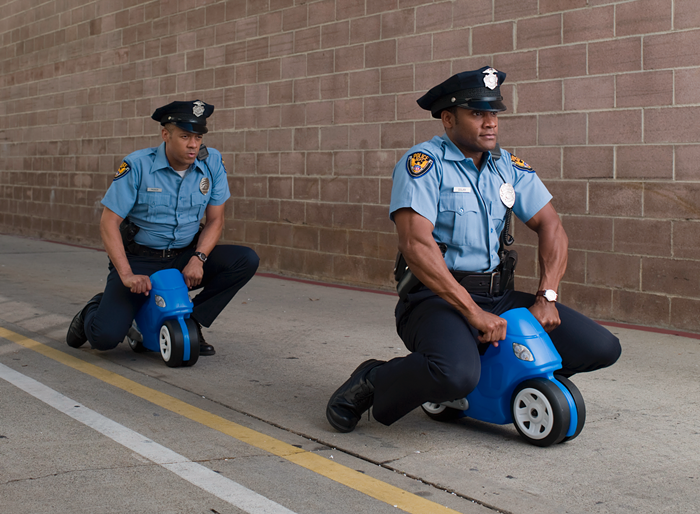Stanley Kubrick was a genius, of course. But once you get past that self-evident truth, there’s quite a bit to unpack: his obsessive attention to detail, his legendary penchant for zillions of takes, and his tendency to treat actors as particularly troublesome parts of the scenery. (What kind of director makes Scatman Crothers break down, for heaven’s sake?) But whatever can be said of his methods, the results are marked by an improbable, absorbing flawlessness. This weekend, the Hollywood Theatre’s quick and essential “Kubrick on Film” retrospective offers up five of Kubrick’s best, all on 70mm or 35mm—and in the process, proves that no other filmmaker has ever set up shop so completely inside their own head, or delivered such weird, hermetically-sealed masterpieces.
Things kick off, chronologically speaking, with 1956’s The Killing (screening Sat Sept 9 on 35mm). Kubrick’s third film, this heist-gone-wrong thriller stands as one of the few times the fiercely self-contained director seems to be taking his cues from someone else—namely cult author and co-screenwriter Jim Thompson, whose misanthropic streak gives the movie a compulsively nasty thrum. It’s mandatory viewing, with a final line that serves as a kiss-off to the entire noir genre.
Shuffle ahead to 1968, when Kubrick went cosmic and entire generations of moviegoers clutched their heads in lysergic wonder. No matter how many times you’ve seen it, 2001: A Space Odyssey (Fri Sept 8 and Sun Sept 10, 70mm) is still just ... really, what can you say about a movie that casually skips over millions of years, then somehow proceeds to only get bigger from there? The Hollywood has a 70mm print on their hands, which means you should all be stampeding over there right now.
2001’s success gave Kubrick free rein to do whatever he wanted, and take as long as he wanted. So he did, and he did. Heretical as it feels to type, 1971’s A Clockwork Orange (Mon Sept 11, 35mm) now seems like the director’s shakiest movie, with the usual exquisite production design and geometrically perfect staging unable to mask an atypical uncertainty at the film’s core. (That Kubrick himself withdrew it from screening in Britain until after his death in 1999 sure feels significant.) None of this means Clockwork isn’t still an utterly fascinating film to watch, especially whenever the Beethoven kicks in and Malcolm McDowell’s horribly infectious jocularity ramps up.
Kubrick came back from the future with 1975’s assumed identity epic Barry Lyndon (Sat Sept 9, 35mm). While your mileage may vary with Ryan O’Neal’s balsa-wood effectiveness in the lead (or the nearly three-and-a-half-hour runtime), the almost indecently lovely look of the film, as well as its absolutely astringent wit, are beyond dispute. The gulf between what the narrator says and what he means can be measured in light years.
The lineup concludes with 1980’s The Shining (Sun Sept 10, 35mm), and, again, where do you even start? Maybe with just how damned funny it is, ranging from those wonderful/horrible carpets, to those perfectly jagged edits (has there ever been a more hilariously ominous title card than “WEDNESDAY”?), to Jack Nicholson teetering on the verge of transforming into a cartoon wolf in any given frame. As the steadicam vrooms through those endless, architecturally improbable hallways, the director’s fearsome gifts are on full display—alongside the rather discomfiting sensation that he held complete dominion over absolutely everything on the screen, right down to the placement of individual air molecules. To quote a rather enthusiastic fan from the Shining-obsessed documentary Room 237, “Kubrick is thinking about the implications of everything that exists!” The thing is, while you’re watching these remarkable films, that statement actually doesn’t seem that far off.



















